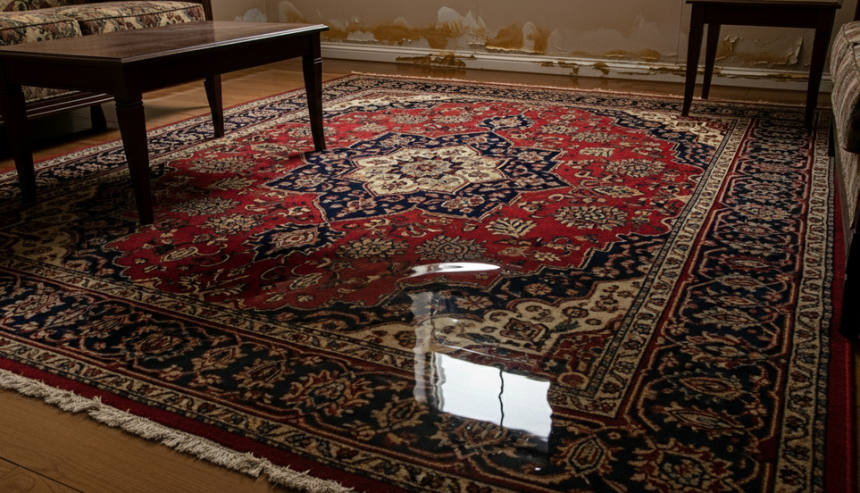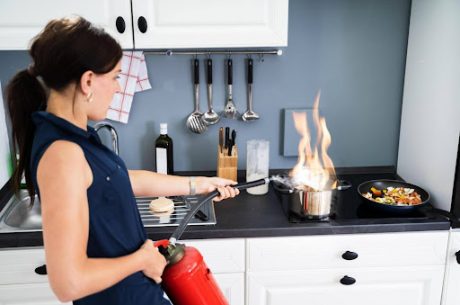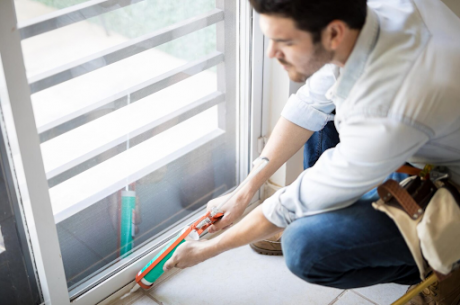Oriental rugs and delicate carpets are more than just floor coverings. They’re part of a home’s personality, bringing color, pattern, and style into spaces where people gather and memories are made. So when unexpected water damage hits, it feels more than inconvenient. Rugs with history, texture, or sentimental value can be ruined quickly if the right steps aren’t taken. Whether the water came from a burst pipe, indoor flooding, or a leaking appliance, damage can set in fast and quietly.
Fortunately, damaged doesn’t always mean ruined. How the situation is handled in the hours and days after a water event makes a big difference. Acting promptly and knowing the warning signs can help protect your investment. The sooner water damage is spotted and help is brought in, the better the chances of saving your rug. In a place like Michigan, where temperature swings and rainfall can bring moisture problems year-round, being prepared is smart.
Identifying Water Damage
Spotting water damage early gives you a better shot at saving your rug or carpet. But it’s not always as obvious as a soaked floor. Sometimes it begins quietly, with moisture creeping in from the edges or settling beneath a rug for days before you notice anything.
Here are some common signs that your Oriental rug or carpet has water damage:
– Damp or soggy sections, especially underneath
– Irregular discoloration or fading
– Musty or damp smells coming from the fabric
– Texture changes like wrinkling or stiff patches
– Visible mildew or mold at the base or corners
Michigan homeowners face some unique risks. During fall, an increase in heater use and household water systems can trigger pipe leaks. Winter boot traffic brings in snow that melts deep into fabrics. Old appliances or damaged roofs can also surprise you during a heavy rain. Even a slow drip from a washing machine over a few days can cause rug fibers to absorb moisture. Watch for these small signals throughout the changing seasons.
Initial Steps To Take
If you find your rug or carpet has water damage, the first thought might be to vacuum or hang it to dry. But acting without a plan can cause more harm than good. Simple steps done early can reduce the damage before professionals arrive.
Here’s what you should do right away:
1. Pick up any furniture or heavy items resting on the rug. Metal can rust into fabric and wood can leave stains.
2. Don’t roll or fold the rug while it’s wet. That could cause unwanted creases or damage the backing.
3. Use a clean, dry towel to blot and absorb the top layer of moisture. Avoid rubbing, as it can pull or tear fibers.
4. If small enough, lift the rug onto bricks or blocks for better airflow without putting it in direct sunlight.
5. Keep it away from heaters or blow dryers. Too much heat can cause shrinking or fading.
Moisture trapped in carpet padding or backing can grow mold that spreads fast. Oriental rugs made from natural fibers like wool or silk often hold water differently than synthetics, and without the right treatment, they may never return to their original look or feel. Even what seems dry could be harboring trouble beneath the surface.
Calling in a professional carpet water extraction service right away makes a major difference in stopping long-term problems.
The Professional Carpet Water Extraction Process
Once you’ve addressed immediate concerns, the restoration work really begins. Surface drying alone won’t be enough to protect your rug or carpet. Water might have soaked into the padding, flooring, or backing, and all of that needs careful attention to avoid mold or odor issues.
Professional extraction starts with a detailed inspection. Experts identify how far the damage has spread and what kind of materials they are working with. Natural fibers, like wool or silk in Oriental rugs, require a different drying approach than synthetic carpets.
High-powered water extraction tools are used to pull moisture deep out of the fabric and padding—far more effectively than home machines. Once visible water is gone, the drying process begins using air movers and dehumidifiers. These help create a steady, slow dry that avoids shrinking or damage to the rug’s structure. Unlike quick fixes, controlled drying protects delicate fibers and dye patterns from getting distorted.
It’s also important to check the floor underneath. If any water seeped into the wood subfloor or concrete, it could lead to deeper structural issues. Professionals take the whole area into account, not just the rug itself, to prevent hidden damage from being missed.
The carpet water extraction process takes time, but it’s thorough. It’s meant to leave your rug and the surfaces below safe, clean, and in their best condition.
Restoring And Protecting Your Oriental Rugs
With the rug clean and moisture removed, specialists can begin restoration. This is where the rug starts to come back to life through careful cleaning and repair steps. Each Oriental rug tells its own story, from handmade details to unique dyes, so treating them correctly is key.
Professionals use special tools and soft brushes to clean without scraping away fibers. Powerful chemicals are avoided to keep the natural dyes from fading. For rugs that show signs of wear—fraying edges, holes, or unraveling—repairs are often done by hand. Matching threads are sewn in, and missing knots may be carefully replaced. Some pads may be swapped out if they soaked up too much water.
Once your rug is restored, there are a few easy ways to protect it moving forward:
– Rotate it a few times a year so traffic or sunlight doesn’t wear just one area
– Use a rug pad underneath for better ventilation and to keep moisture out
– Avoid walking on it with wet shoes, especially during Michigan’s rainy and snowy months
– Vacuum without a beater bar to protect delicate fibers
– When storing, roll—not fold—and keep it somewhere dry and cool
Many rugs get damaged slowly. It might take years before stains show or fibers break down. Staying ahead of moisture and dirt with these basic steps adds years to your rug’s life.
Safeguarding Against Future Water Damage
Once you’ve been through water damage, you won’t want to repeat it. While not every leak or storm can be avoided, some habits go a long way in protecting your carpets.
Start by checking areas around the rug. Look at the baseboards, water lines, and nearby appliances. In Michigan, shifting temperatures can cause sealing materials to crack or break. Waterproofing the basement or using sealants in high-traffic wet areas could help stop damage before it spreads.
Keep gutters and downspouts clear. Water that pools near the home’s foundation often finds its way inside. Roof inspections and sump pump checks should also be part of your yearly home checklist.
If you’re running a humidifier in winter, be cautious. Too much moisture in the air can settle around rugs on cold floors or near windows. Keep household humidity balanced to avoid adding dampness unintentionally.
It also helps to look over:
– Water connections behind appliances
– Pipes in crawl spaces or basements
– Floor tiles and grout near bathrooms or laundry
– Attics for signs of roof leaks or hidden drip points
These quick checks caught early can help you avoid another water cleanup situation down the road.
Helping Rugs Stay Beautiful for Years
Your rugs carry bits of your daily life. They get stepped on, played on, and sat on during holidays. They bring warmth to any room. And once damaged, those memories can feel lost. But acting fast, keeping up with small checks, and calling in the right help makes a big difference.
Whether it’s snow tracked in from outside or water from a leaky heater during Michigan’s colder months, small events can lead to major damage if left unaddressed. But many rugs are salvageable when treated with care and speed.
Treat your Oriental rugs with the same attention you’d give other home investments. With consistent care and professional service when needed, they can remain a bright, textured part of your space for generations.
To ensure your delicate Oriental rugs are fully protected and preserved, it’s wise to consider professional help for any water issues. The right carpet water extraction service can make a big difference in bringing your rugs back to life without risk. At PuroClean of Bloomfield Hills, we’re here to handle the job with care and help keep your rugs a lasting part of your home.



